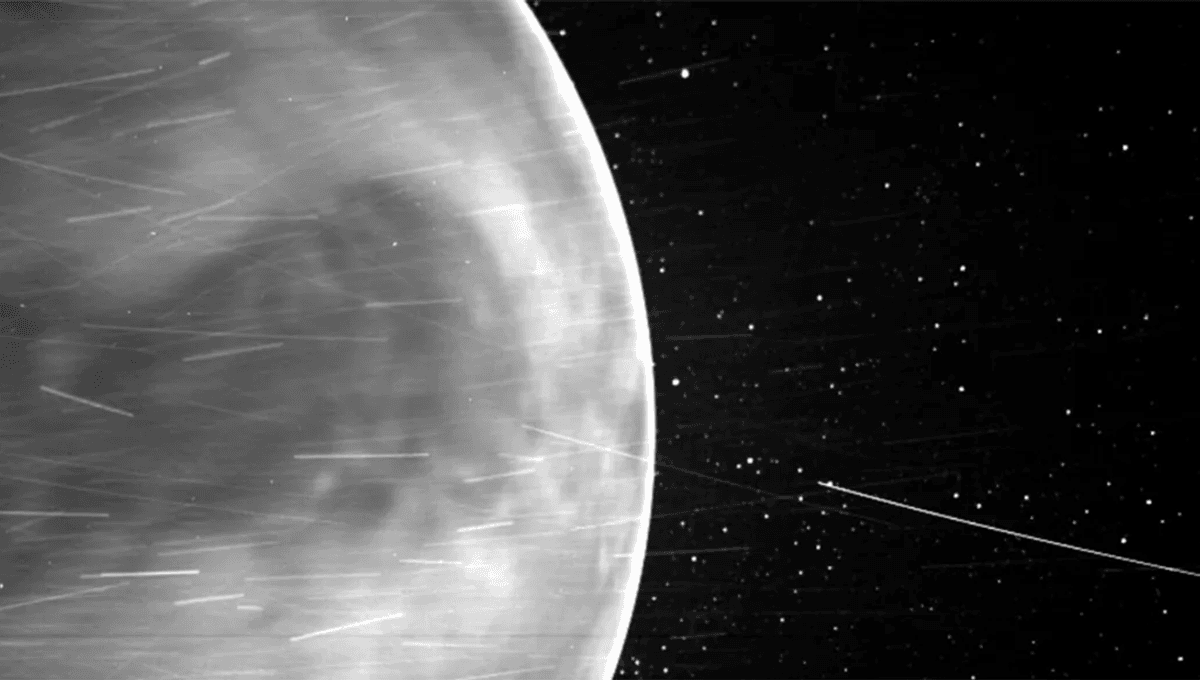
An X (Twitter) thread has been widely-shared over the weekend, in which Radiolab host Latif Nasser explained how he investigated the mystery of a moon labeled “Zoozve” on his 2-year-old’s astronomy poster.
Having noticed the label, he of course Googled it, and found the NASA-confirmed fact that Venus has no moons.
Further Googling found no references to any “Zoozve”, and a friend at NASA had no idea what it was referring to either. Nasser called the illustrator, who swore that he took the name from a list of moons of the Solar System.
To cut a long (but enjoyable!) story short, Nasser’s NASA friend (Liz Landau) realized what had happened. The planet was not Zoozve, but object 2002 VE 68. When space objects are first seen, they are given a provisional name based on when they were discovered. The first number part, as you might have guessed, relates to the year.
“The provisional designation includes the year of its discovery followed by two letters that give the order of its discovery during that year. Objects, discovered between 1 and 15 January, are designated in order of their discovery, AA, AB, AC, and so on. Those discovered between 16 and 31 January are given the letters BA, BB, BC, and so on,” the European Space Agency explains, adding that J is not used. “The final discoveries of the year, between 16 and 31 December, have designations in the series YA, YB, YC.”
The object is a lot more interesting than your standard space rocks, being as it was the first of its kind ever discovered, due to its unusual orbit.
“Like all asteroids, its orbit takes it around the Sun, with asteroids closer to the Sun circling more rapidly and completing a ‘year’ in a shorter time. The ‘year’ for VE68 is shorter than the Earth year, clocking in at a little under 225 days,” the Tuorla Observatory explained in a 2004 press release.
“This is almost exactly the same as the ‘year’ of the planet Venus – and it turns out that like synchronised divers in the olympic games, both VE68 and Venus are travelling around the Sun nearly in lock-step.”
Tracking the orbit of 2002 VE, they had discovered the first quasi-moon, or quasi-satellites, in the Solar System. Quasi-moons, as the name suggests, are not quite moons. They orbit the Sun, but are also influenced by the planets along their path.
Since the discovery of 2002 VE, other quasi-moons have been discovered. Though these moons can come and go, Earth has two which have been officially recognized.
2002 VE has been orbiting the Sun and encountering Venus for quite a while, but the team who first described its orbit think it may have come from elsewhere.
“Our computations show that it has been in its present orbital state for about seven millennia and will stay there for five more centuries to come,” the team wrote in their paper. “Very close approaches with Venus and Mercury are excluded within the interval of time of reliable numerical computation of the orbit, but repeated encounters with the Earth do occur. From the evolution of the orbit of this object, we conclude that it may have been a near-Earth asteroid, which, some 7,000 yr ago, was injected into its present orbit by the action of the Earth.”
A later paper, when more observations had been carried out, found possible close encounters with Earth, as well as a very complicated orbital path.
“We find that 2002 VE68 will remain as a quasi-satellite of Venus for about 500 yr more and its dynamical evolution is controlled not only by the Earth, with a non-negligible contribution from the Moon, but by Mercury as well,” the team wrote. “2002 VE68 exhibits resonant (or near-resonant) behaviour with Mercury, Venus and the Earth. Our calculations indicate that an actual collision with the Earth during the next 10 000 yr is highly unlikely but encounters as close as 0.04 au occur with a periodicity of 8 yr.”
[H/T: Radiolab]
Source Link: Why Everyone Is Talking About "Zoozve", The Solar System's First Quasi Moon